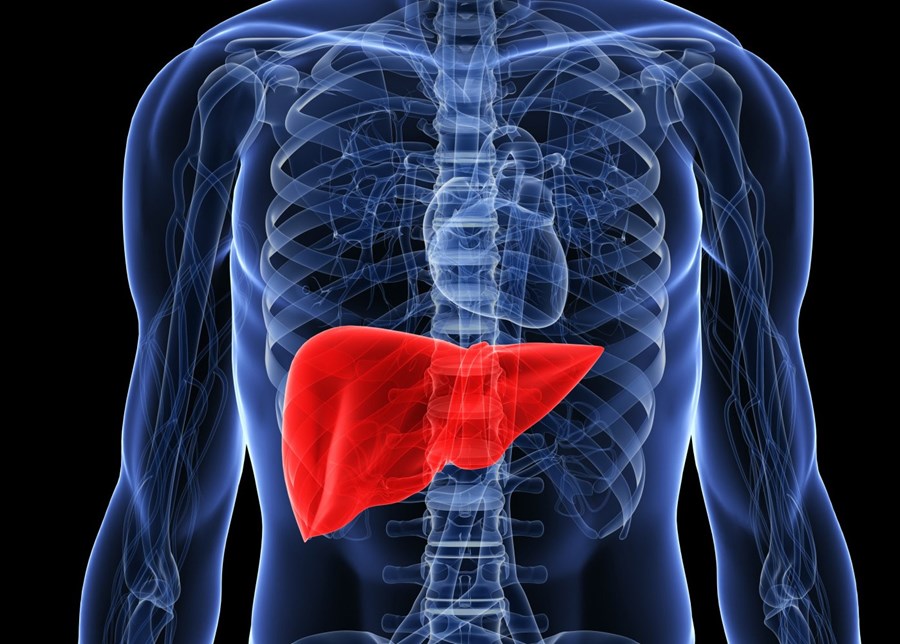Clinical Trial Shows Nor-Ursodeoxycholic acid (Nor-Uso) As New Viable Treatment Option For Nonalcoholic Fatty Liver Disease.
Source:Thailand Medical News Jul 30, 2019 5 years, 8 months, 3 weeks, 6 days, 16 hours, 14 minutes ago
The current incidence rate for nonalcoholic fatty liver disease shows that about 20 percent of the global population is affected while the figures in developed countries like America, Germany, Austria and Britain, figures can be as high as between 35 to 50 percent especially in the 50 to 60 age group. It is a disease most commonly caused as a result of poor lifestyle with too much fatty and sugary foods and too little exercise.

Fatty liver disease is a so-called silent condition that in most cases is usually only discovered by accidental occurrences. The long-term consequences can be serious and can lead to cirrhosis and cancer of the liver. Around 25 percent of all fatty liver diseases are classified as the most dangerous form of fatty liver steatohepatitis(NASH), which in turn develops into cirrhosis of the liver in about 40 percent of cases. The incidence of fatty liver steatohepatitis is also growing in countries like Singapore, Malaysia and also Thailand. There is currently very few and not so effective treatment options available for fatty liver steatohepatitis.
However two years ago, a study conducted by the Medical University Of Vienna in Austria led by Professor Dr Michael Trauner from the Division of Gastroenterology and Hepatology, discovered the usage of synthetically produced bile acid with the active agent nor-ursodeoxycholic acid (nor-urso) in the successful treatment of the incurable liver disease condition known as primary sclerosing cholangitis (PSC).
However, recent clinical trials conducted by the same university has also indicated that nor-urso is also an effective treatment option for nonalcoholic fatty liver disease. Team leader, Dr Stefan Traussnigg from Medical University Of Vienna in an exclusive interview with Thailand Medical News commented, "The Phase IIa trial of nor-urso shows positive results when used in nonalcoholic fatty liver disease. The bile acid circulates through the body like a steroid hormone and regulates many metabolic processes. In fatty liver disease, it is as if a bile-acid-signal resistance develops, so that these processes no longer function properly. Nor-urso re-intensifies the hormone effect of the bile acid. This gives patients a much better prognosis for the further course of the disease.”
Synthetically produced bile acid protects the liver from inflammation, which otherwise could culminate in fibrosis. The researchers use the hormone effect of the bile acid as a target.
The researchers now want to conduct further studies to test whether nor-urso also helps to inhibit the commonest causes of death in fatty liver diseases namely cardiovascular diseases such as heart attacks or strokes, thereby improving life expectancy in general.
The hepatologists at Medical University of Vienna have developed two further therapy options using bile acid, which have already been prominently publicised. A further approach targets the activation of the bile acid receptor FXR (a sensor for bile acid). This receptor is involved in important processes such as regulation of lipid and glucose metabolism and the synthesis and circulation of bile acid. Long-term data from a Phase III trial on the use of obeticholic acid in primary biliary cholangitis (PBC), as the first clinically available FXR ligand, were published this year. This was recently approved as a second-line treatment for PBC and has also shown beneficial effective in both fatty liver disease and NASH.
There are already other new FXR activators or ligands av
ailable besides Obeticholic acid, which do not have a bile acid structure (so-called non-steroidal FXR ligands) and which are therefore better tolerated. These could likewise produce the first positive results in primary biliary cholangitis. These promising options now give us three further possibilities for individual treatment, in the spirit of personalised medicine, utilising the signal properties and hormone effects of bile acids.
References:
Stefan Traussnigg et al. Norursodeoxycholic acid versus placebo in the treatment of non-alcoholic fatty liver disease: a double-blind, randomised, placebo-controlled, phase 2 dose-finding trial, The Lancet Gastroenterology & Hepatology (2019). DOI: 10.1016/S2468-1253(19)30184-0
Michael Trauner et al. Long-term efficacy and safety of obeticholic acid for patients with primary biliary cholangitis: 3-year results of an international open-label extension study, The Lancet Gastroenterology & Hepatology (2019). DOI: 10.1016/S2468-1253(19)30094-9
Michael Trauner et al. The Nonsteroidal Farnesoid X Receptor Agonist Cilofexor (GS-9674) Improves Markers of Cholestasis and Liver Injury in Patients With Primary Sclerosing Cholangitis, Hepatology (2019). DOI: 10.1002/hep.30509
